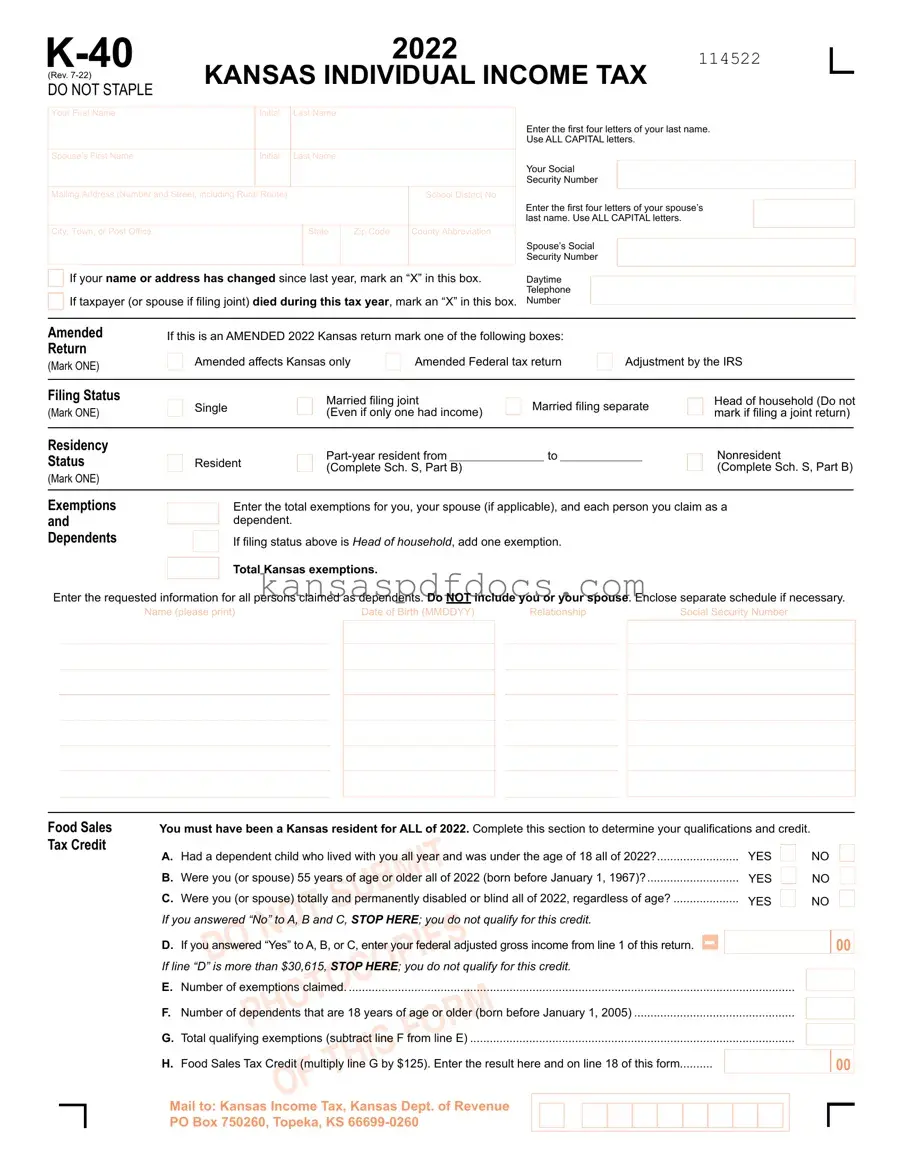The Kansas K-40 form is a crucial document for individuals filing their state income tax returns. It serves as the primary form for reporting income, claiming deductions, and determining tax liabilities for Kansas residents. The form requires personal information, including names, addresses, and Social Security numbers, ensuring that the taxpayer's identity is accurately recorded. It also prompts users to indicate their filing status, such as single, married filing jointly, or head of household, which can significantly impact tax calculations. Additionally, the K-40 includes sections for exemptions and dependents, allowing taxpayers to account for family members and potentially reduce their taxable income. Residents can also apply for credits, such as the Food Sales Tax Credit, which provides financial relief based on specific criteria related to age and disability. The form guides users through calculating their adjusted gross income, deductions, and any tax owed or refund due. By completing the K-40 accurately, individuals can ensure compliance with state tax laws while maximizing their eligible benefits.
